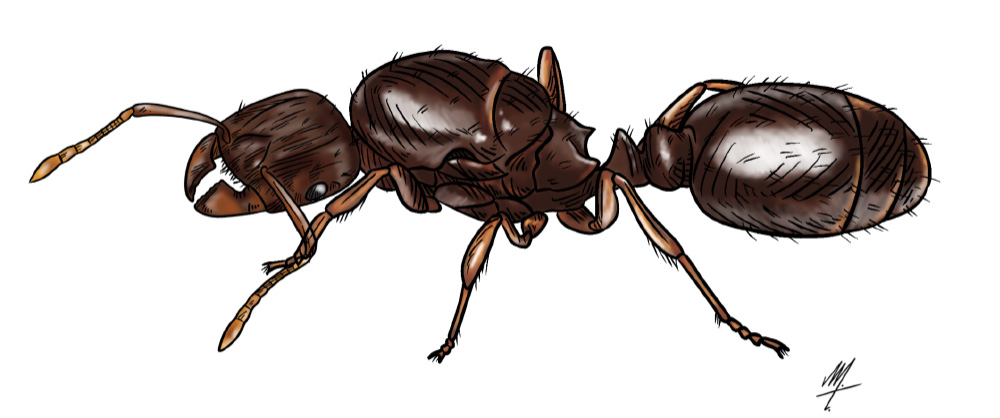The Secret Life of Pavement Ants: Small but Mighty Urban Dwellers
Hello, young adventurers! Get ready to explore the world of Pavement Ants, the tiny champions of the concrete jungle. These small ants might seem insignificant, but they have a lot to teach us about survival, cooperation, and the urban ecosystem. Let’s discover the hidden life of these fascinating insects!
What is a Pavement Ant?
The Pavement Ant, known scientifically as Tetramorium caespitum, is a common sight in urban and suburban areas. These ants are small, usually about 2.5 to 4 mm in length, and are recognized by their dark brown to black color. They’re famous for making their homes in the cracks of pavements and under sidewalks, hence their name.
Building Their World
Pavement Ants are master builders. They create intricate underground colonies with multiple chambers and tunnels. These colonies can house thousands of ants and are often located under stones, logs, or, of course, pavements.
The Colony: A Thriving Society
Like many ant species, a Pavement Ant colony includes a queen, worker ants, and, during certain seasons, winged males and females. The queen’s job is to lay eggs, while the workers — which are all female — forage for food, care for the queen and her brood, and defend the colony.
Diet: A Varied Menu
Pavement Ants are omnivoresOmnivores are animals that eat both plants and meat. They are like the flexible eaters of the animal kingdom. Just as you can have a salad for lunch and a hamburger for dinner, omnivores enjoy a variety of foods. Learn More, meaning they eat both plants and animals. Their diet includes insects, seeds, honeydew, and human food scraps. This diverse diet helps them thrive in urban environments where food sources are abundant.
Ecological Role
In the ecosystem, Pavement Ants play a role in the decompositionDecomposition is a natural process that happens when living things, like plants, animals, or other organic matter, break down into simpler substances. It is a part of the circle of life and plays an essential role in recycling nutrients back into the environment. Learn More process by breaking down organic matter. They also help aerate the soil, which is beneficial for plant growth.
Friends and Foes
These ants have a mutualistic relationship with aphids, just like their carpenter ant cousins. However, they face threats from predators like birds, spiders, and larger insects. Pavement Ants also engage in territorialThe behavior of animals when they defend a specific area they live in or use for resources. Beavers can be territorial, especially when protecting their lodge. Learn More battles with other ant colonies, showcasing their fierce defensive strategies.
Reproduction and Growth
Each year, Pavement Ant colonies produce new queens and males with wings. These ants leave their home colonies to mate, and the fertilized queens establish new colonies. This annual cycle ensures the spread and growth of Pavement Ant populations.
Survival Strategies
Pavement Ants have adapted well to urban environments. They’re capable of finding food in challenging conditions and can navigate complex urban terrains. Their ability to live close to humans is a testament to their adaptability and resilience.
Challenges in the Urban Jungle
While Pavement Ants are not endangered, they face challenges like habitat disturbance and exposure to pesticides. Urban development can disrupt their colonies, forcing them to relocate and adapt to new environments.
Pavement Ants may be small, but they are mighty in their ability to adapt and thrive in our urban world.
So, the next time you see a line of Pavement Ants marching across the sidewalk, remember the complex and fascinating world they represent, right under our feet!




